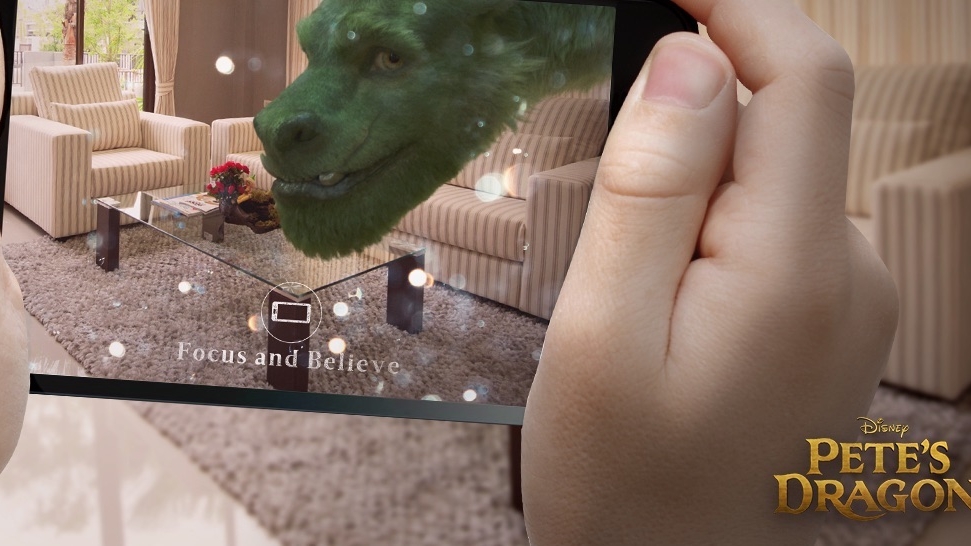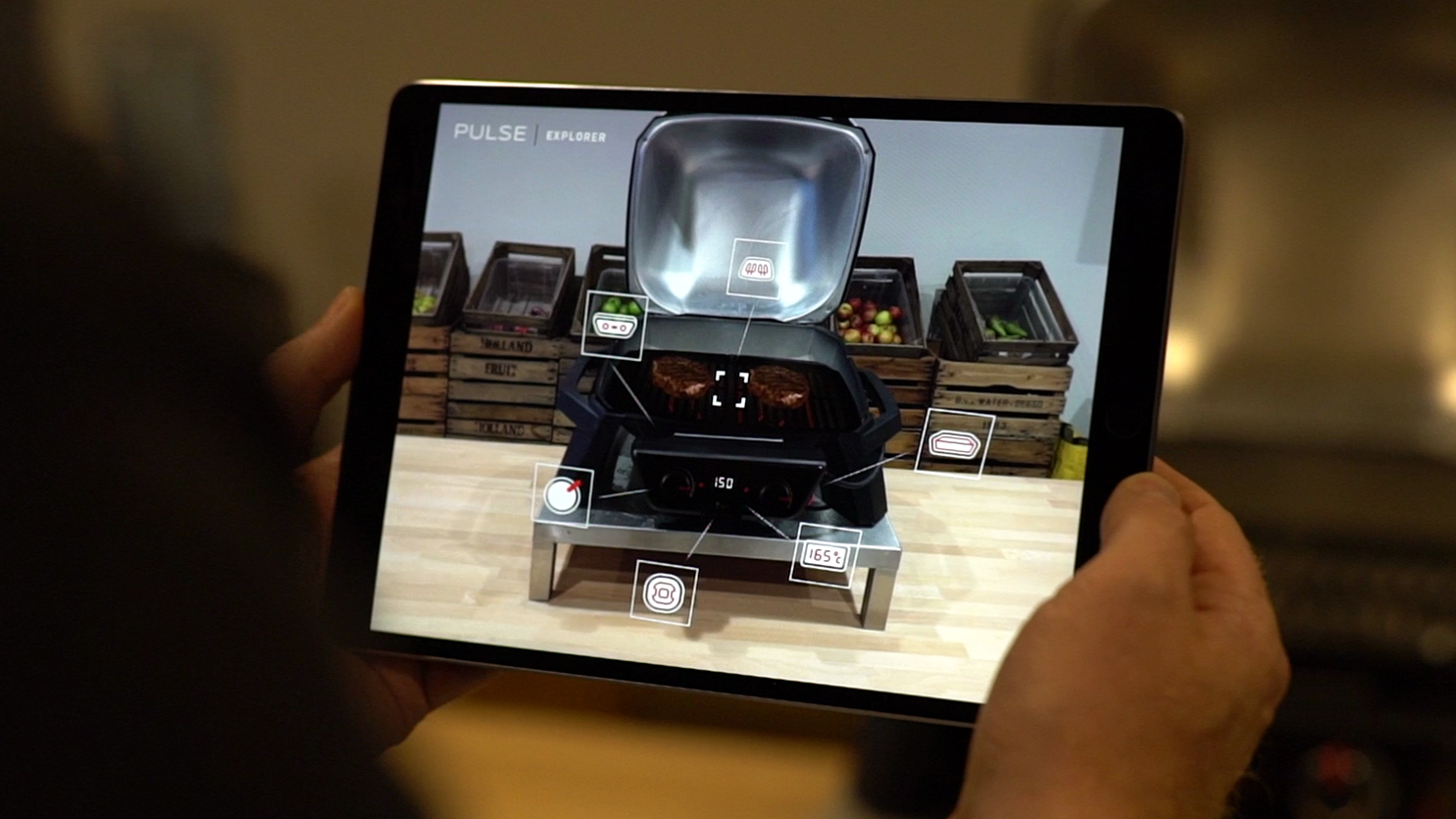Get Started Devising Your AR Strategy Now
The camera is the new browser. Augmented reality has steadily improved over the years, allowing for entirely new, immersive experiences that remove the friction between brand offerings and their audience. The tech’s maturity is of particular interest for brands to add to their marketing mix thanks to its reach: through AR, any part of the user’s direct environment becomes a surface to advertise and build relationships.
So when I say the camera is the new browser, what I actually mean is that this emerging technology requires organizations to rethink how they tailor their message to their audience, just like with social media before it. We’re very bullish on AR, believing it will change the way people interact with the world and with each other, quickly and at scale. Brands should be a part of this process, helping to create those experiences—and lucky for them, there are ample opportunities for AR to create real business value. If you’re just wrapping your head around the new possibilities of AR or have considered investing in the tech for some time, consider these three questions early in your design process.
Why Do Consumers Love AR, and Where Do We Fit?
Augmented and virtual reality hit mainstream consciousness around the same time, making it easy to confuse the two. Throw in mixed reality and the differences between the platforms becomes even fuzzier. Which reality fits your idea depends on whether you want to tell a story to the user, or prefer to give them the tools to tell their own. If the first option is your goal, then VR or mixed reality is best. But when it comes to the second, AR makes the perfect environment for expression and experimentation.

While web AR still hasn’t launched, we were able to create a bit of a stopgap solution with our Dragon Spotting experience to promote Disney’s film Pete’s Dragon. While the web-based experience doesn’t load a model directly in the space around users, it prompts them to seek out specific environments—the family TV, for example—and pulls from the Google Cloud Vision API to identify whether the user has found it. If there’s a match, an animation of the dragon triggers to show that the user was successful. When Web AR really kicks off, such AR experiences will become much more sophisticated and allow for mass adoption.
Augmented reality is an exciting platform that asks both users, brands and developers to really reconsider the way they interface with machines. The technology is ever evolving, and brands shouldn’t wait to invite the platform into their strategies. By understanding what users love about AR, what the current limitations are and where it’s going next, organizations remain ready for this next big revolution in tech.
AR is an instinctual medium that people are comfortable exploring.
The most effective uses we’ve seen recently are with social platforms like Facebook and Snapchat, which have integrated AR filters into their apps’ respective camera features. This provides fun, out-of-the-ordinary opportunities to photograph and share (think funny facial effects or whimsical monsters joining them on the sofa) that fit seamlessly within the platforms. We’ve seen time and time again in this environment that AR is an instinctual medium: people react quickly and are comfortable in exploring, trying out and testing its features without the feeling of frustration or confusion that can be typical of entirely new interfaces.
As far as user experimentation is concerned, AR is very effective in mapping out information and allowing the user to explore or dive deeper however they choose. Why look at a tough-to-read diagram labeling out info when you can view it directly hovering above the object right in front of you? We set out to achieve this with an AR app that helped customers get acquainted with the hottest features of Weber’s Pulse grill. The app provided a virtual layer of informational hotspots that explained the grill’s parts and showed how they worked with animations. For enterprise use, this speaks to the original promise of AR: that users can easily see contextually relevant information without having to use their hands (i.e. like a car’s parts labeled in AR as a mechanic works on it).

On the consumer side, this method makes for a memorable example of persuasive marketing. With the Weber Pulse app, users had the ability to grill a virtual meal via AR first, alleviating any concerns before trying the real thing. By mimicking the real-life act of grilling BBQ, their experience with the product “sticks” better in their mind than if they’d just watched an ad or seen the grill on a shelf. This improves the chance of conversion or whatever KPI you’re tracking.
How Do I Anticipate and Capitalize on AR’s Limitations?
AR may have settled into broad appeal over the years, but it’s still an emerging technology with room to grow. Early in the process of concepting your experience, take the time to understand and embrace the limitations of the platform you choose. This is when you need to assess the specific platform that best supports the AR experience you want to provide: should you develop for a Facebook or Snapchat filter? Is a custom, fully-featured mobile app a better choice?
There are pros and cons to everything. Photo filters on Facebook and Snapchat both enjoy robust engagement and wide reach thanks to their integration with social platforms. AR in this environment is usually only mildly branded, where the focus is less on the product or brand and more on fun, shareable content that somehow aligns with it. But these filters’ ability to instantly load comes at a cost: a restrictive file size that limits functionality. Initially, this seems like a challenge. If you recognize this limitation and design a very focused experience around it, you can end up with an enthralling, snackable experience that fits the platform so well.

A dedicated AR app, meanwhile, provides greater functionality and creative opportunities through its integration with ARCore and ARKit in a mobile OS. While this platform allows you to do much more (like the Weber grill app discussed above), it’s costlier in resources and has a higher barrier of entry for consumers who may be less willing to download an app. That said, dedicated AR apps make excellent tools for retail events, trade shows or public installations, like the narrative AR experience we made with Santander.
Where is the Technology Headed Next?
New platforms for hosting and developing AR experiences will aim to reduce friction between brands and users, which is really the big promise of AR: providing a direct and intuitive interface that blurs the line between physical and digital. Brands who wish to advertise through AR will need to evolve with new possibilities and formats that emerge.
To get an example of an AR platform emerging right now, check out Google Playground, which is directly integrated with Google’s Camera app—at least for some users. The Playground feature offers a new type of interaction: rather than simply pose with a filter, users can freely place virtual objects in their environment before snapping a photo to send. They’re a lot like the stickers that are common in several photo editing apps, except these objects (called “playmoji”) are three-dimensional and stay in place as users move the camera around.
Brands looking at AR need to evolve with emerging possibilities and formats.
AR is still maturing, a point I touched upon at CES panel on where the AR experience is going. The next big leap for augmented reality will be web-based AR, something that Google has shown but isn’t yet widely available. In the meantime, the startup 8th Wall has tried to carve out a unique space in being the only platform for developing true, web-based AR experiences. Loading up AR experiences directly in a mobile web browser will dramatically reduce friction for the user, doing away with the need of downloading apps or navigating through a library of effects. Instead, you need only point them to your website to activate. With 5G on the horizon set to unlock connection speeds, users will soon have unprecedented access to more immersive experiences.
Related
Thinking
Sharpen your edge in a world that won't wait
Sign up to get email updates with actionable insights, cutting-edge research and proven strategies.
Monks needs the contact information you provide to us to contact you about our products and services. You may unsubscribe from these communications at any time. For information on how to unsubscribe, as well as our privacy practices and commitment to protecting your privacy, please review our Privacy Policy.


